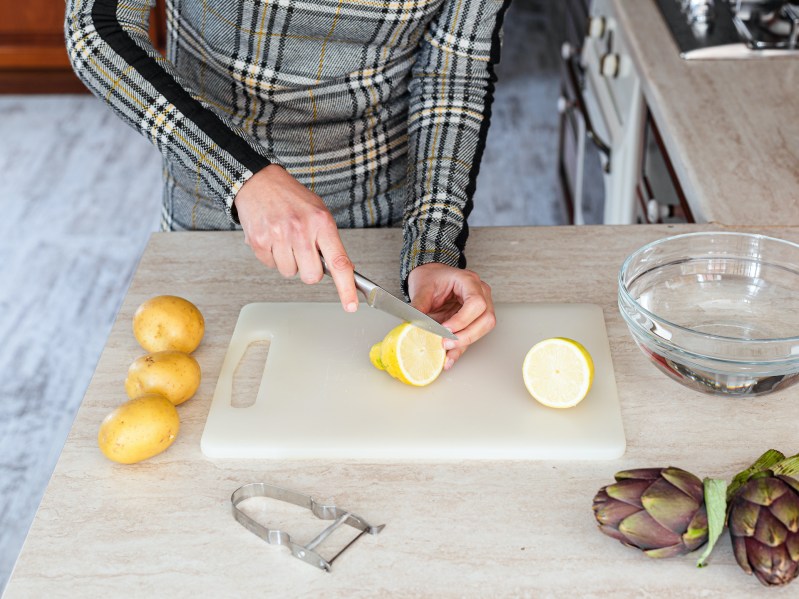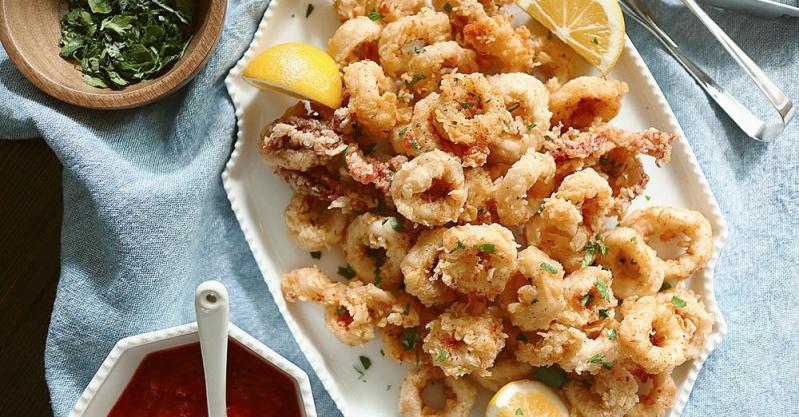
Who doesn’t love deep-fried calamari? It’s one of those things that’s ordered and then disappears in seconds, no matter who’s at the table. But have you ever thought to make this dish at home? While squid isn’t as easily found as say, something like salmon, it’s growing more and more common in most grocery stores, and usually for a pretty great price. Not only that, but it’s extremely simple to make, is done in minutes, and will impress everyone around your dinner table.

Fried calamari recipe
We love this recipe for its simplicity and lack of pretension. Just be sure to make a huge batch because this will go fast! This simple recipe is courtesy of The Tasting Table.
What you’ll need to make fried calamari
- 1 cup buttermilk
- 1 pound squid, cleaned and dried with tentacles, tubes cut into ½-inch thick rings
- 1 1/2 cups flour
- 1 teaspoon salt
- 1/2 teaspoon black pepper
- 2 1/2 cups canola oil
- 1 tablespoon chopped fresh parsley (optional)
- Lemon wedges (optional)
- Marinara sauce for dipping (optional)
Recipe steps
- In a medium bowl, pour buttermilk over the squid, mixing well. Refrigerate for 30 minutes.
- In a separate bowl, whisk together salt, pepper, and flour.
- Remove squid from the refrigerator, shaking off excess buttermilk from each piece.
- Toss the squid in the flour mixture, coating each piece evenly.
- In a large skillet, heat the oil over medium-high heat until a thermometer reads degrees Fahrenheit.
- Line a sheet pan with paper towels and set it near the skillet.
- Fry the squid in small batches until golden brown, about 2 to 4 minutes. Remove and set on a prepared sheet pan, and season with salt and pepper.
- Repeat with the remaining squid, making sure the oil comes back up to 375 degrees Fahrenheit before frying each batch.
Fried calamari tips and tricks
- Be sure your oil is at 375 degrees Fahrenheit before frying your squid. Any cooler than that, and the oil will soak into the breading, giving your calamari a greasy, wet consistency. If your oil is too hot, on the other hand, the outside will burn, but the squid will be raw on the inside.
- Be careful not to overcook your squid. While a slight overcooking is forgivable for certain ingredients, squid is not one of them. If you aren’t careful, they can quickly turn into deep-fried rubber bands.
- Season your calamari immediately after it comes out of the oil. When the oil is still damp, the seasoning will stick much better than if you wait a few minutes.
- Calamari doesn’t sit well. It’s best to eat this dish as soon as it’s finished. But we really doubt that’ll be an issue.

Other seasoning to use when making fried calamari
Besides salt and pepper and lemon, there are other options when seasoning your homemade fried calamari. Here are some ideas:
- Paprika and more: Blend the salt and pepper with paprika or blend it with garlic powder, onion powder, or cayenne pepper.
- Lemon and more: For added flavor with the lemon, chop up fresh parsley or oregano to make a tastier seasoning mix.
- Spicy kick: If you like things hot, add some chili flakes, red pepper flakes, or even sriracha to your seasoning.
- Asian-inspired taste: For an Asian-inspired twist, use a blend of soy sauce, ginger, garlic, and sesame seeds.
- Smoky flavor: Smoked paprika or chipotle powder can add a nice smoky flavor to your homemade fried calamari.
No matter what seasoning you choose, be careful not to overseason the calamari, as you don’t want to mask the delicate flavor of the seafood.



